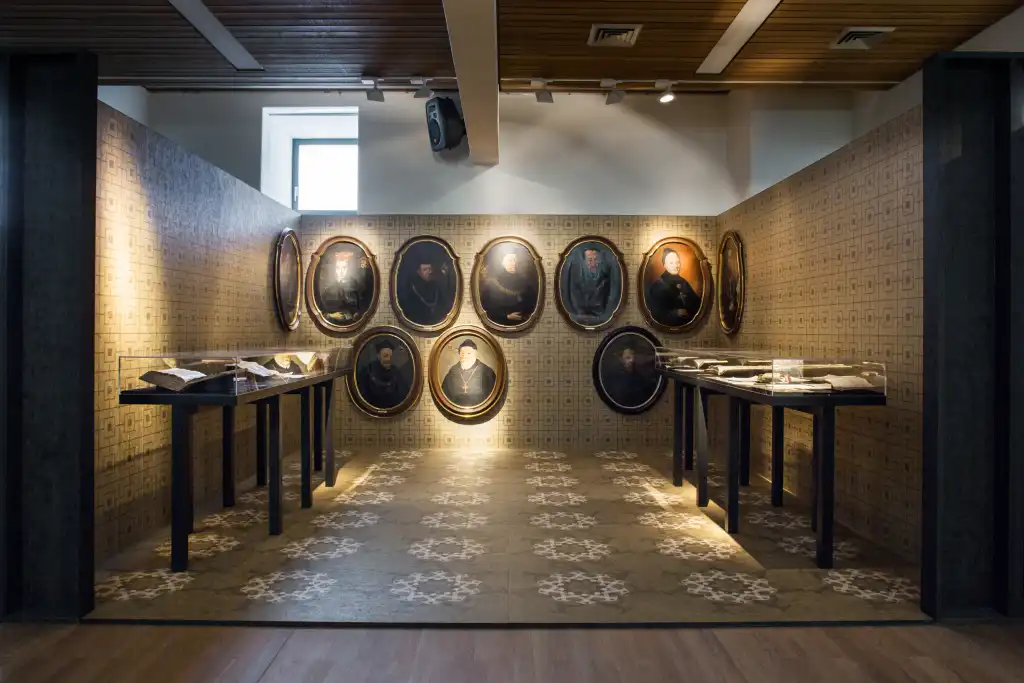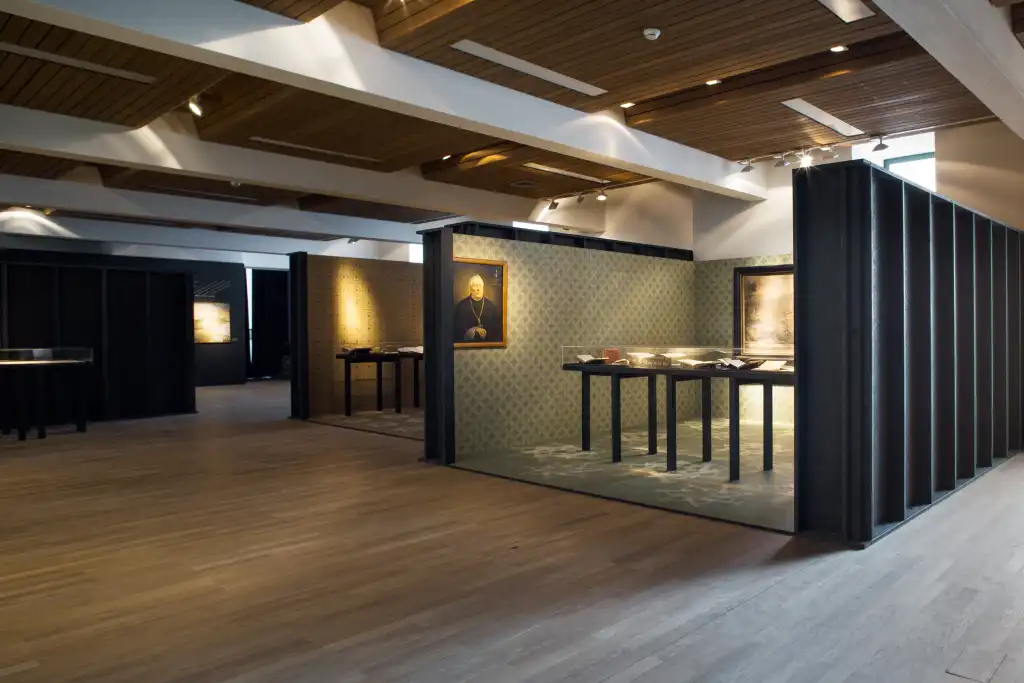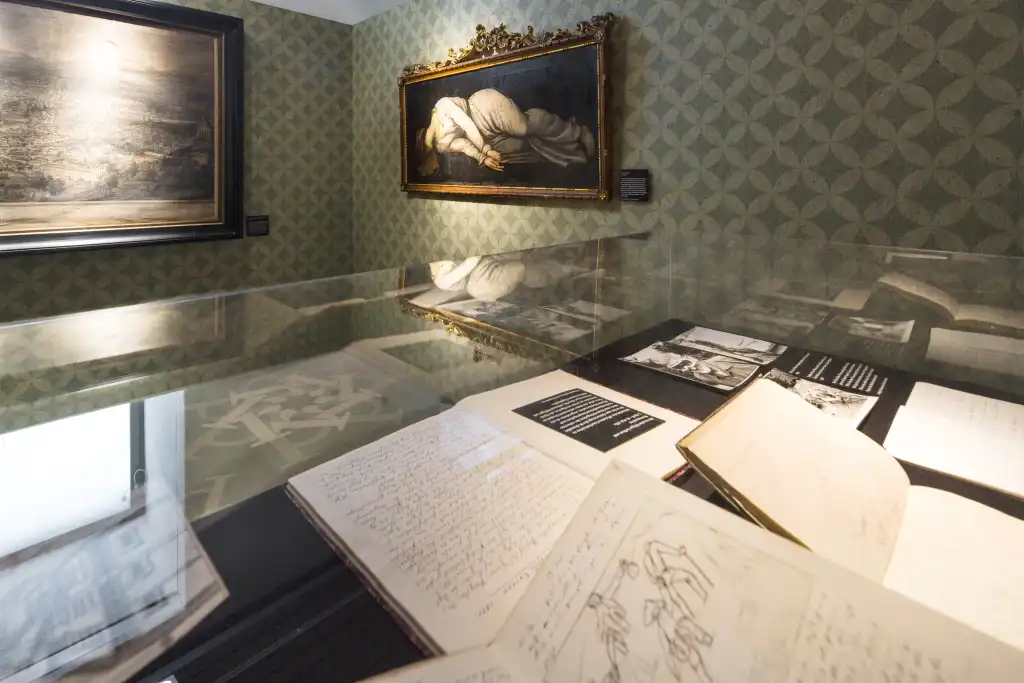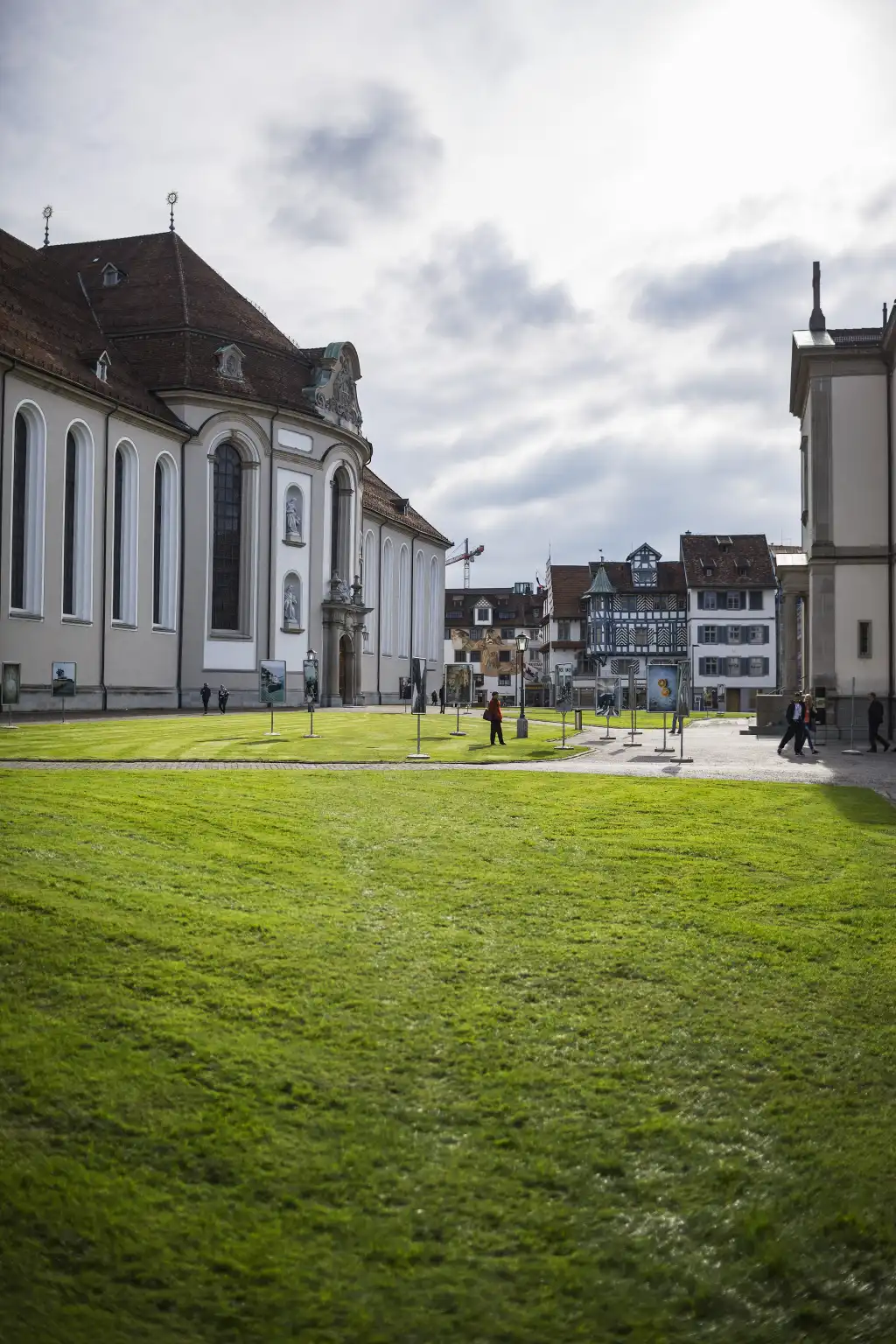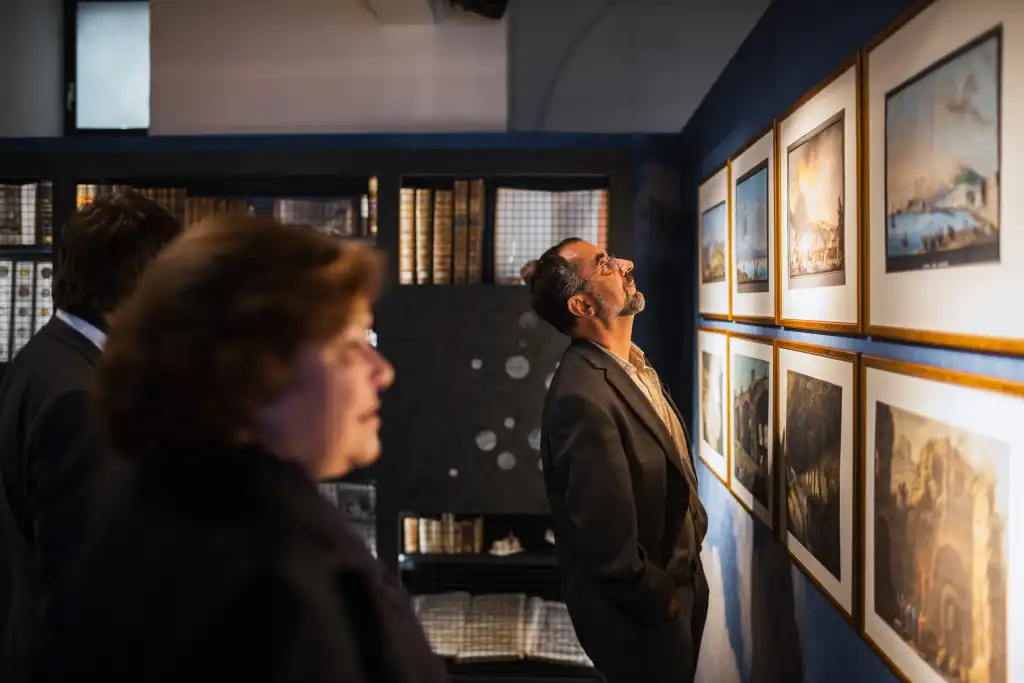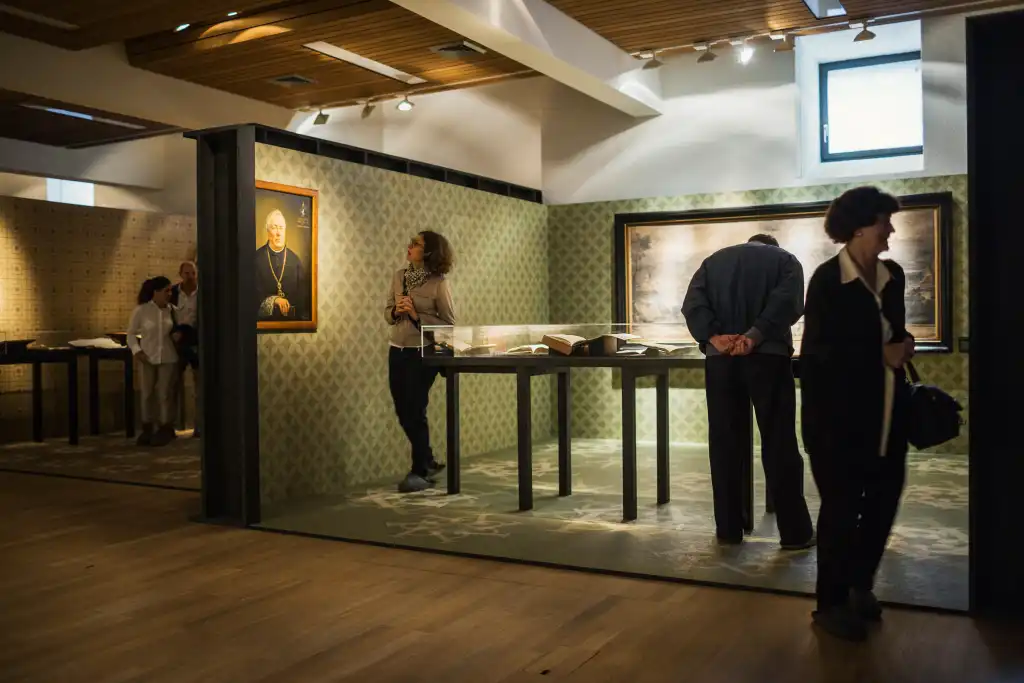79
Grand Tour der Mönche
Dissipated contemplative
| Title | Grand Tour der Mönche |
|---|---|
| Year | 2014 |
| Client | Stiftsarchiv St.Gallen |
| Curators | Peter Erhart and Jakob Kuratli Hüeblin |
| Exhibition duration | 4. September to 30. November 2014 |
| Collaboration | Alberto Alessi, Zürich |
The first visit to the air-conditioned “strong-room” in the Stifts-archiv (monastery archive) of St. Gallen with the monastery archivist Peter Erhart was a very special moment. We encountered a fascinating organizational system with chests, drawers, boxes and portfolios for artistically made cards and documents, which may only be handled by those wearing gloves. Then there were the books in the full-height shelving – with the appropriate respect we took down the handwritten originals and the first examples of printed material. The books are medium size, not constrained by any kind of current day standardization, in bindings made of fantastic materials, cardboard, linen and leather.
The thread-stitched, hand-bound books could be easily opened and the individual details of the binding conveyed a great understanding of functionality. We were surprised by the unusual form of the areas of text and the layout. In many cases pages were divided vertically in the middle, the outer columns were empty or used only marginally, whereas the columns of text that run into the gutter margin were covered from top to bottom with precise calligraphies in small lettering and with an animated but yet rhythmical expression. The archivist explained to us that this “half-page” system was adopted to leave room for later entries, commentaries and additions. Peter Erhart then showed us the finds that he had selected, which were to be the actual focus of this project: four original diaries kept by travelling monks. The two curators, Peter Erhart and Jakob Kuratli Hüeblin, wanted to present these rare documents of the Benedictine culture of travel to the public for the first time. They planned an exhibition in the culture space of the Stiftsarchiv, an exhibition catalogue and academic publications, with translations of the Latin texts into German and Italian. These diaries are about travels in southern Europe, which in those days were often undertaken by aristocrats, musicians and men of letters, in this case with a religious background and the appropriate travel goals: first of all Rome as a spiritual centre, then on to Naples, regarded at that time as the world’s most beautiful city. “Vedi Napoli e poi muori – Die Grand Tour der Mönche (“See Naples and Die – The Grand Tour of the Monks”), was the title of the project that refers to travels and life, the secular and the spiritual.
Reinhard Gassner
